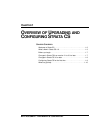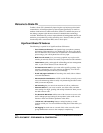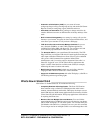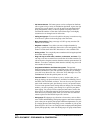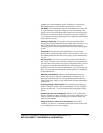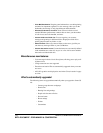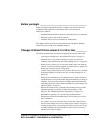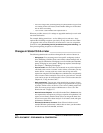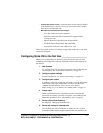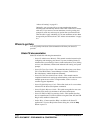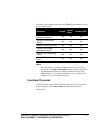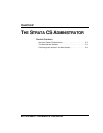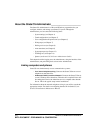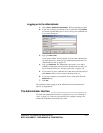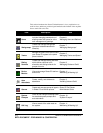
CHAPTER 1. OVERVIEW OF UPGRADING AND CONFIGURING STRATA CS 1-9
BETA DOCUMENT - PRELIMINARY & CONFIDENTIAL
n Custom data easier to use. Custom data items are now centrally defined
in the Administrator so that it’s easy to see a list of all custom variables
that can be associated with calls.
n Miscellaneous new features and changes.
n Five-digit extensions are now supported
n Extensions and station IDs are automatically suggested when
creating new users
n Personal Status has replaced Do Not Disturb (DND)
n Call Rules replace People Rules and Smart DND
n In the Client, Extensions view replaces User view
Wherever possible,
Strata CS 3.x settings are upgraded seamlessly to work with
new
Strata CS features.
Configuring Strata CS for the first time ____________________
When you are configuring your Strata CS system for the first time, you must
complete the following tasks, which are explained in detail in the remainder of
this manual:
1. Add licenses.
To configure Strata CS, you must first enter the license codes that your
system requires. See “About Strata CS licenses” on page 3-2.
2. Configure system settings.
For more information, see “About system settings” on page 4-2.
3. Configure your trunks.
In addition to physically connecting your trunks, you must define them
in the Trunks view in the Administrator in order to use them, and
configure the trunk behavior. This is true for every kind of
trunk—analog, T1, E1 or Internet. See “Adding trunks” on page 5-3.
4. Create users.
Define your Strata CS users, assign them stations, extensions and
passwords, record their voice titles, set up their voice mailboxes and
define their permissions. See “About adding a user” on page 6-7.
5. Set up outbound call handling.
See Chapter 8, “Managing Outbound Calls.”
6. Set up call routing for inbound calls.
You can have calls sent to an operator or directly to users via direct
inward dial (DID) without going through the main auto attendant. See



